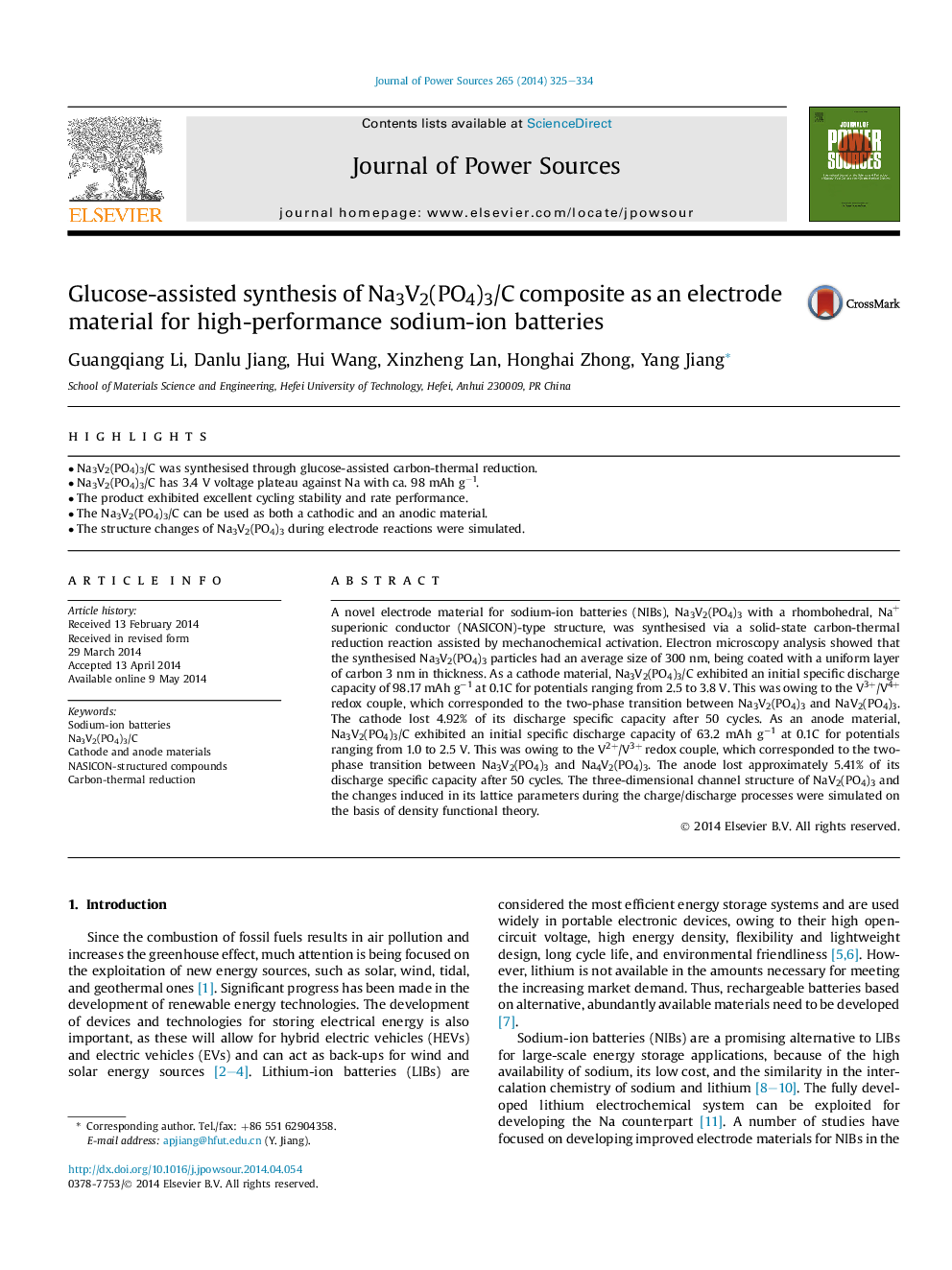| کد مقاله | کد نشریه | سال انتشار | مقاله انگلیسی | نسخه تمام متن |
|---|---|---|---|---|
| 1284071 | 1497967 | 2014 | 10 صفحه PDF | دانلود رایگان |

• Na3V2(PO4)3/C was synthesised through glucose-assisted carbon-thermal reduction.
• Na3V2(PO4)3/C has 3.4 V voltage plateau against Na with ca. 98 mAh g−1.
• The product exhibited excellent cycling stability and rate performance.
• The Na3V2(PO4)3/C can be used as both a cathodic and an anodic material.
• The structure changes of Na3V2(PO4)3 during electrode reactions were simulated.
A novel electrode material for sodium-ion batteries (NIBs), Na3V2(PO4)3 with a rhombohedral, Na+ superionic conductor (NASICON)-type structure, was synthesised via a solid-state carbon-thermal reduction reaction assisted by mechanochemical activation. Electron microscopy analysis showed that the synthesised Na3V2(PO4)3 particles had an average size of 300 nm, being coated with a uniform layer of carbon 3 nm in thickness. As a cathode material, Na3V2(PO4)3/C exhibited an initial specific discharge capacity of 98.17 mAh g−1 at 0.1C for potentials ranging from 2.5 to 3.8 V. This was owing to the V3+/V4+ redox couple, which corresponded to the two-phase transition between Na3V2(PO4)3 and NaV2(PO4)3. The cathode lost 4.92% of its discharge specific capacity after 50 cycles. As an anode material, Na3V2(PO4)3/C exhibited an initial specific discharge capacity of 63.2 mAh g−1 at 0.1C for potentials ranging from 1.0 to 2.5 V. This was owing to the V2+/V3+ redox couple, which corresponded to the two-phase transition between Na3V2(PO4)3 and Na4V2(PO4)3. The anode lost approximately 5.41% of its discharge specific capacity after 50 cycles. The three-dimensional channel structure of NaV2(PO4)3 and the changes induced in its lattice parameters during the charge/discharge processes were simulated on the basis of density functional theory.
Journal: Journal of Power Sources - Volume 265, 1 November 2014, Pages 325–334